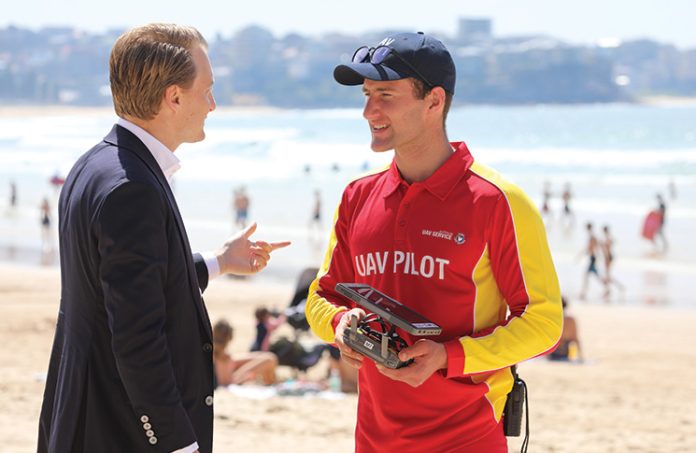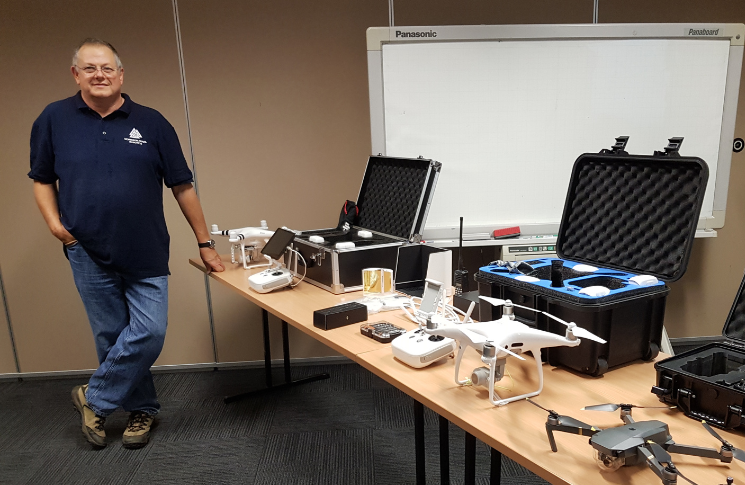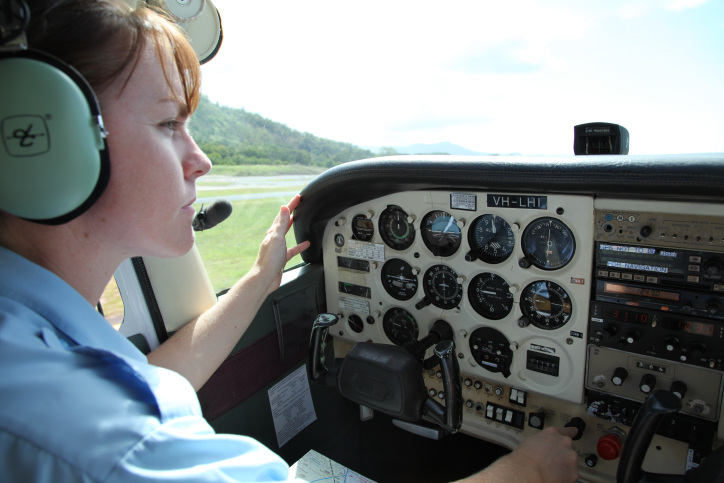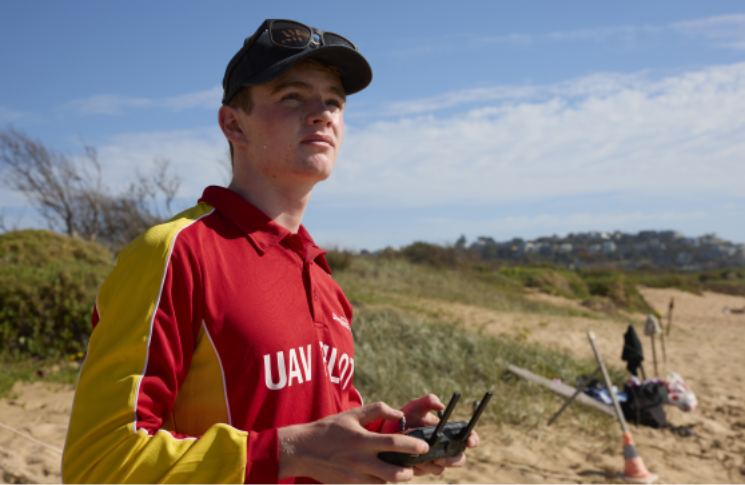Working along some of Australia’s most beautiful beaches, saving lives, and providing important surveillance on marine animals and our coral coastline. Sounds like a great job, especially to Paul Hardy who deals with this and more in his role as UAV Operations Coordinator and Chief Remote Pilot with Surf Life Saving NSW.
Although Paul initially came from a Paramedicine and public safety project management background, he first became involved with drones with no knowledge or experience, he now cannot imagine doing anything else and flying drones is also now one of his favourite hobbies.
‘Surf Life Saving NSW saw the potential benefit of drones and first introduced a trial three years ago to see how they could contribute to and enhance our existing programs,’ says Paul.
‘After only a few years, drones are now an essential part of our service to where, with support from the Department of Primary Industries and Westpac through the Westpac Life Saver Rescue Drone program, they are now used across the NSW coastline in programs covering marine search and rescue, incident support, wildlife surveillance, event safety and beach assessment and mapping.’
‘[Drones] have now been fully integrated into our lifesaving activities and are essential to our daily beach assessment by providing us with a clear visual picture of conditions such as sand banks, rips and shark activity, which can and has saved lives.’
‘We operate a fleet of over 90 drones including Phantom 4, Mavic 2 and Mavic Mini and last season we made over 10,000 flights, covered 42,000 km with nearly 3000 hours of flight time at over 45 locations with over 300 paid and volunteer drone operators.’
Although mostly used for surveillance and to support existing lifesaving capabilities, since introducing drones to their service Surf Life Saving NSW has had some notable rescues, including a whale recovery.
‘With eyes in the sky, the UAV was able to give the team a comprehensive look at the scope of the carcass, helping guide the team as they worked in the water. The jet ski and inflatable rescue boat crew got the tow line in around the tail. They worked for about an hour to secure it before it could be successfully towed out,’ says Paul.
The integration of UAVs into the Surf Life Saving toolkit has proved invaluable.
‘A drone was also involved in assisting when a boat came close to rocks on the South Coast. One of our operators spotted the boat in trouble, launched the drone, confirmed they needed assistance and contacted rescue services.’
With the nature of the drones being used at crowded beaches and surveillance of marine animals, the organisation also works closely with CASA’s team of remotely piloted aircraft systems inspectors, who have been very supportive in providing guidance, safety advice, and working on the reform of safety regulations to enable life saving drone operations.
‘Above all, safety is our top priority and all our operators must undergo a two-day training program provided at no cost to Surf Life Saving members, which teaches drone operations and safety,’ says Paul.
‘Beaches are busy with lots of people and are also a popular place where members of the general public also like to fly drones, but an important thing to keep in mind is that there are strict guidelines in place for the operation of drones near people and marine life.’
‘You should familiarise yourself with the rules for flying drones at the beach before you launch one and our drone operators are also always happy to chat to you on the beach and provide information on the rules, as we want to keep everyone safe on the beach and in the water.’
‘We would welcome anyone who is interested in Surf Life Saving drone operations, whether you are from a manned aviation background or have no experience in drones, to join.’






what is an advantage and dissadvantage about how drones affect/improve our lives?